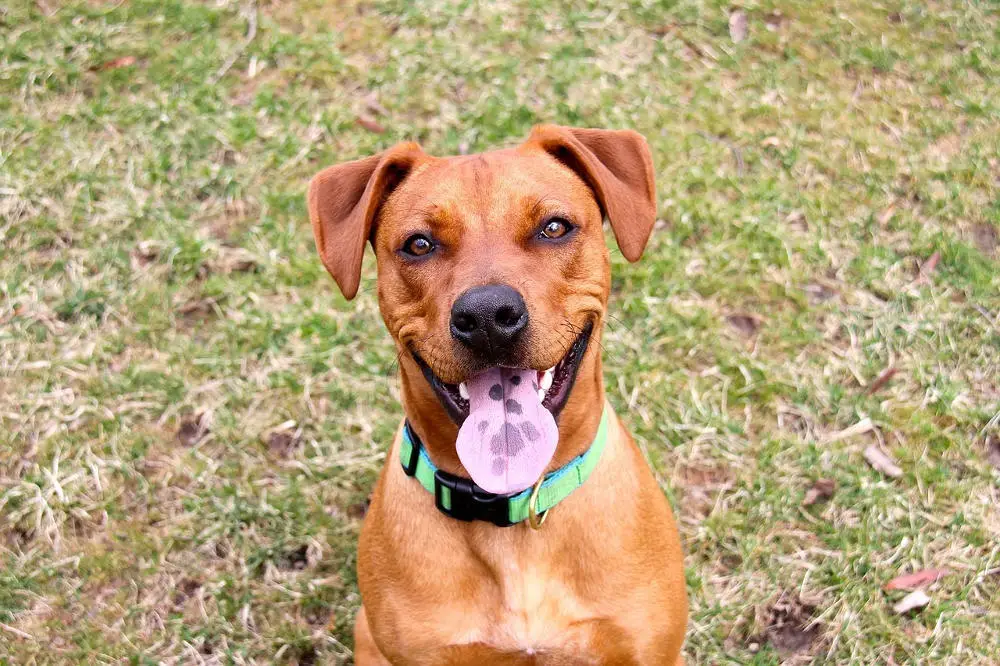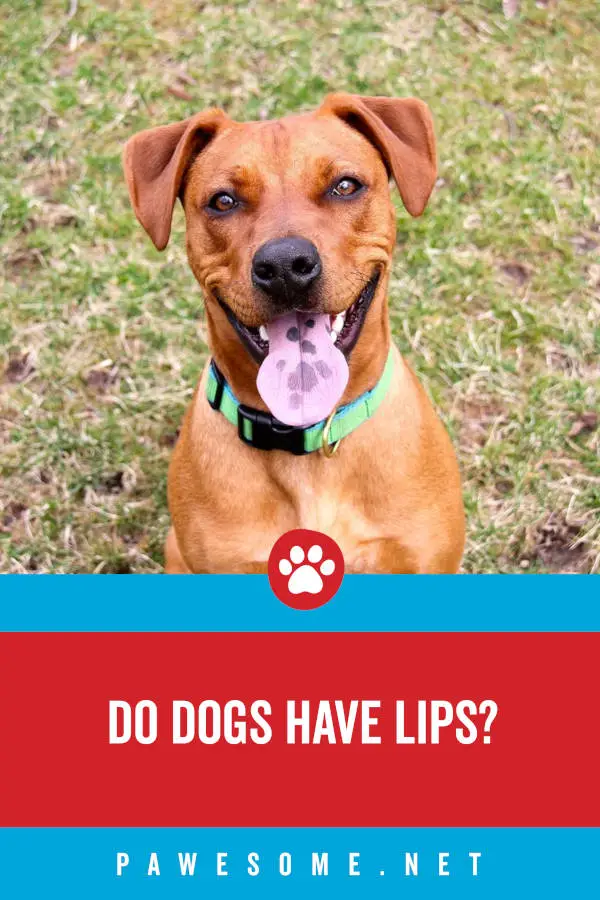 It may seem like a weird, out-of-the-blue question but have you wondered whether your little furkid has lips? You can’t be blamed if you didn’t—it’s hard to get past those fuzzy wet tongues that spill unconditional love and the ever-ready-for-tug-of-war teeth!
It may seem like a weird, out-of-the-blue question but have you wondered whether your little furkid has lips? You can’t be blamed if you didn’t—it’s hard to get past those fuzzy wet tongues that spill unconditional love and the ever-ready-for-tug-of-war teeth!
But now that the question’s been raised, do you think dogs have lips? Read on to find out!
The Anatomy of a Dog’s Mouth
Unlike humans and many other mammals that have separate upper and lower lips, separate from the cheeks, dogs don’t have distinguished lips. However, this doesn’t mean that they’re a lipless species!
If you observe a dog’s head, you’ll see that there are floppy ears, a muzzle, a wet nose and a distinct forehead. In the mouth region, though all you may see are the tongue, teeth and whiskers, there are lips—lips are actually an important part of a dog’s anatomy!
Dogs’ lips are not only physically different from humans’ lips but they’re also used quite differently.
Where humans use their lips to chew food and talk, among other things, dogs use their lips as a perennial shield around their teeth and jaw. Additionally, the lips play an essential role in transporting scents from around them to the nose, helping maintain a sharp sense of smell.
Additionally, dogs have long jaws with lips that are not clearly separated from each other, unlike humans, who have short, small jaws. However, our cheeks have a better capacity, which dogs lack.
The length helps them house more teeth that are necessary for breaking bones and tearing through flesh, which humans don’t need. This long jaw with indistinct lips that aren’t clearly connected is also the reason behind the puddles of water your dog leaves on the floor every time he drinks some!
The Flew and Lower Lip
Yes, dogs’ lips have names—the upper lip is the flew and the lower one is, well, the “lower lip”!
The flew comes in various shapes and sizes; the bigger the jowls and flew, the more trails of drool you’ll find in your abode! Some examples are Mastiffs, Saint Bernards, Bulldogs, Basset Hounds, Retrievers and Bloodhounds, to name a few.
The lower lip is generally hidden under the flews—that’s how much bigger they are!
Why Are There Bumps on My Dog’s Lips?
If you’ve looked closely (or even if you haven’t, as they’re quite striking), you’ll notice a pattern of raised bumps on your furball’s lips. Unlike the smooth lips that we have, dogs’ lips feature bumps, especially closer to the edges.
These bumps are an additional form of protection for the dogs; while hunting or eating, the sharp teeth could end up injuring the gums and skin surrounding the teeth. (Ever bitten yourself by mistake while eating? Then you know how necessary this is!)
Without this protection, a canine tooth can tear through the skin as easily as a nail through a cloth!
The next time your dog chews on a bone, try to observe the lips—you’ll notice the bumps gripping the bone, holding it in place while simultaneously protecting the mouth area from the chewing.
Why Are Dog Lips Black?
The thought that all dogs have black lips is a common misconception—dogs actually have lips that are the same color as their gums and nose; some even have grey or brown lips. The amount of melanin produced in your furkid’s body determines the color of the lips.
The more the melanin, the darker the coat, skin and lips. However, this color isn’t a standard—it can change as your dog ages, caused by many factors such as the growth hormone and its production, for example. Even your dog’s nose can change color.
What Is Oral Papilloma Virus?
Large bumps/clusters of bumps on your dog’s gums and lips could be an indicator of the oral papillomavirus. This virus is highly contagious and results in the formation of benign tumors all around your dog’s mouth. Your dog can contract this from another dog by sharing toys or socializing.
As long as the papillomas aren’t infected, they can be left untreated. However, if warts get infected, they could cause a whole world of pain to your dog, worsened by swelling, and will require antibiotics to treat them.
Dogs that are under 2 years of age are more susceptible to oral papillomavirus than older dogs as their immune systems aren’t developed enough or strong enough to fight the virus.
Can My Dog Smile?
Dogs don’t smile in the conventional sense, though you’ll see Instagram and other social media sites flooded with pictures of cute, smiling, happy dogs! A wide-open mouth with the tongue sticking out is a sign that your dog is calm, content and satisfied.
However, what people commonly (wrongly) perceive to be a grin can be a sign of your dog’s anxiety, fear or discomfort. To further clarify, this is the now-famous ‘Gram-flooding “guilty look” that we’re talking about.
This look is often accompanied by a nervous wagging of the tail, pulled-back ears and even shivering—this means that something is wrong and requires your attention!
Additionally, if you’ve been rewarding your dog for this “grin” or giving him attention, he’ll make it a habit and use this behavior as a means to get treats in the future.
So Can Dogs Kiss?
Another silly question but considering that we just found out that dogs have lips, after all, quite a valid question! If you’ve been dreaming up cute images of dogs giving kisses a la the Lady and the Tramp, it may be disappointing to hear that dogs don’t kiss other dogs or their owners!
The reason for your dog licking you may be more due to their liking for the salty taste of your skin than them actually exhibiting any love! However, don’t discount the fact that dogs do occasionally express their love by nipping and licking.
The Bottom Line
It may have come as a surprise to a lot of you, but yes, dogs do have lips! Though they’re not as well defined and distinguished as human lips, they very much exist and aid your furball in a ton of functions, from bettering their sense of smell to being a form of protection to helping them eat.
Ensure you give your doggo sufficient care and groom him well to ensure that their lips remain healthy and free of any infection so that you can both give each other “kisses of love”!

